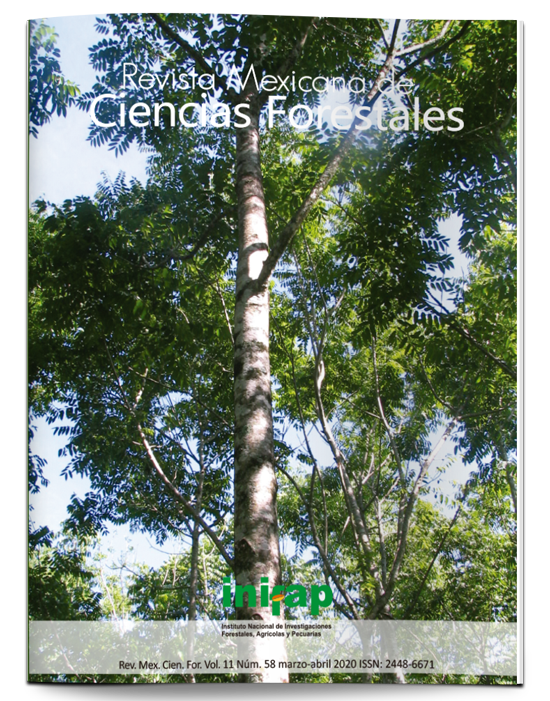Cedrela odorata L.: oportunidades para su conservación y mejoramiento genético
DOI:
https://doi.org/10.29298/rmcf.v11i58.622Palabras clave:
Cedrela odorata L., conservación, diversidad genética, genoma, marcadores moleculares, mejoramiento genéticoResumen
Cedrela odorata, conocida comúnmente como cedro rojo, es una especie forestal tropical de alto valor comercial en el mercado internacional de la madera. La fragmentación del paisaje en su área de distribución y la tala clandestina con selección disgénica causan erosión genética en sus poblaciones naturales, lo que disminuye su potencial adaptativo y productivo. Debido a esto, es más susceptible a daños por factores abióticos y bióticos como Hypsipyla grandella, su principal plaga y causa de bajo rendimiento en plantaciones comerciales. Es así, que se incluye en las listas de organizaciones internacionales como IUCN y CITES, y en México es protegida por la NOM-059 SEMARNAT-2010; sin embargo, la falta de suficientes evidencias sobre su riesgo real pone en duda su permanencia en esta última. Por ello, aunque se han realizado algunas investigaciones para determinar su diversidad genética en poblaciones de América Central, cariotipo, caracterización de su plastoma y transcriptoma foliar, aún falta información esencial para su manejo eficiente y sostenible. El objetivo de la presente revisión es proporcionar un panorama del conocimiento existente sobre los recursos genéticos de cedro rojo, con el fin de identificar alternativas basadas en herramientas biotecnológicas que permitan la comprensión de la especie y fundamenten el diseño e implementación de programas de mejoramiento genético y conservación a largo plazo.
Descargas
Descargas
Publicado
Cómo citar
Número
Sección
Licencia
Los autores que publiquen en la Revista Mexicana de Ciencias Forestales aceptan las siguientes condiciones:
De acuerdo con la legislación de derechos de autor, la Revista Mexicana de Ciencias Forestales reconoce y respeta el derecho moral de los autores, así como la titularidad del derecho patrimonial, el cual será cedido a la revista para su difusión en acceso abierto.
Todos los textos publicados por la Revista Mexicana de Ciencias Forestales –sin excepción– se distribuyen amparados bajo la licenciaCreative Commons 4.0 Atribución-No Comercial (CC BY-NC 4.0 Internacional), que permite a terceros utilizar lo publicado siempre que mencionen la autoría del trabajo y a la primera publicación en esta revista. (no permite el uso comercial)
Los autores pueden realizar otros acuerdos contractuales independientes y adicionales para la distribución no exclusiva de la versión del artículo publicado en la Revista Mexicana de Ciencias Forestales (por ejemplo, incluirlo en un repositorio institucional o darlo a conocer en otros medios en papel o electrónicos) siempre que indique clara y explícitamente que el trabajo se publicó por primera vez en la Revista Mexicana de Ciencias Forestales.
Para todo lo anterior, los autores deben remitir el formato de carta-cesión de la propiedad de los derechos de la primera publicación debidamente requisitado y firmado por los autores/as. Este formato debe ser remitido en archivo PDF al correo: editorial.forestal@inifap.gob.mx
Esta obra está bajo una licencia de Creative Commons Reconocimiento-No Comercial 4.0 Internacional.






